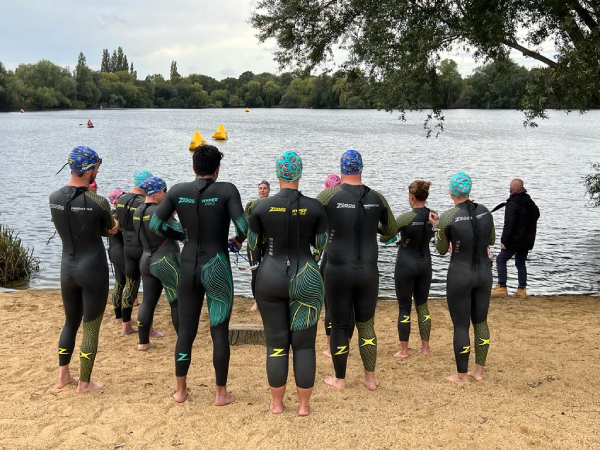
Coaching
MAKING SENSE OF CONFLICTING COACHING ADVICE
Featuring Simon Griffiths
If you’re trying to improve your swimming, you will come across conflicting advice.
Part of the swimming learning process is research. You read, watch videos and speak with friends. You may go to a class, do a one-to-one stroke analysis session or join a club. There’s a lot of advice out there and it’s not consistent. Even if you turn to a single source, such as Outdoor Swimmer, you will still find variations.


Ideas change. For example, there was a time when it was common to teach that your thumb should enter the water first. It is now known that this increases the risk of shoulder injury. Finger-first entry is better but I recently saw a coach demonstrating thumb-first entry. Similarly, it used to be common to teach an ‘S’ shaped pull but most coaches now recommend a straight pull through.
Then there are different ways of swimming. For example, should you do a two-beat or a six-beat leg kick? Should you recover with a straight arm or bend at the elbow? Should you ‘glide’ before starting each stroke? Sometimes coaches are trying to arrive at the same place but approach it from different directions.
I’m not aiming here to set any records straight or lay claim to any coaching philosophy but to make some suggestions to help you make sense of what you see and hear.
Be open-minded
It’s unlikely that any coach will give you misinformation or try to make you a worse swimmer. They want to help. Listen to what they say and consider it, even if it sounds odd or conflicts with what you’ve previously learned.
Consider the context
Sprinters swim differently to long distance swimmers. Triathletes swim differently to pool swimmers. Tall people with long arms swim differently to short people. Pay attention and think about how any advice applies to you and your swimming.
Consider your physical abilities
Elite swimmers are fit, strong and have great flexibility in their shoulders. They can move in ways that you might not be able to. Think about who the advice is directed to.
Experiment and reflect
If you see something you think might apply to you, whether it’s a technique point, a drill or a way to train, give it a go. Be thoughtful about it. Notice how it makes you feel in the water. Does a technique change result in more or fewer strokes to complete a length? Does it make you more tired or less?


Be patient
Making changes in your swimming takes time. It requires a lot of repetition to change conscious movements into an unconscious ones. Something that may make you more efficient in the long run may feel awkward initially. Measure impact in weeks rather than in a single session.
Don’t try too much
Swimming is complicated and there are lots of ideas and things you could experiment with. However, if you try too much at once, you will lose focus and won’t give yourself time to embed changes. One or two changes at a time is plenty.
Learn the language of swimming
I’m aware I’ve used swimming jargon that you may not be familiar with. As you explore swimming, you will come across more of this. The more you read and watch, the more familiar you will become with the way swimmers and coaches talk. Try not to worry about language too much. It will become clearer.
Simon Griffiths is the founder and publisher of Outdoor Swimmer magazine and the author of Swim Wild & Free: A Practical Guide to Swimming Outdoors 365 Days a Year. He’s a regular open water and pool swimmer and frequently takes part in races and swimming challenges. He helped develop the STA Open Water Coaching Qualification and also offers one-to-one Swim Mentoring.
Outdoor Swimmer magazine has been inspiring swimmers since 2011. Each issue is packed with information and advice helping you to swim faster, further and in colder water. Find out more and sign up for their free weekly email newsletter here.













